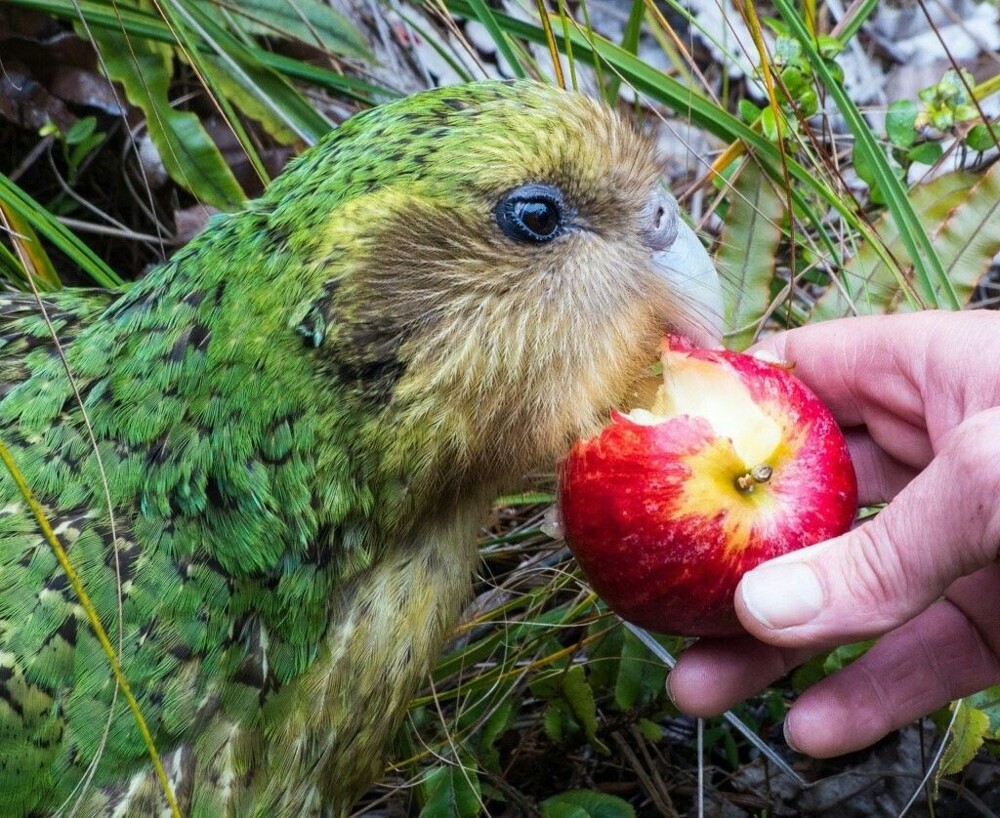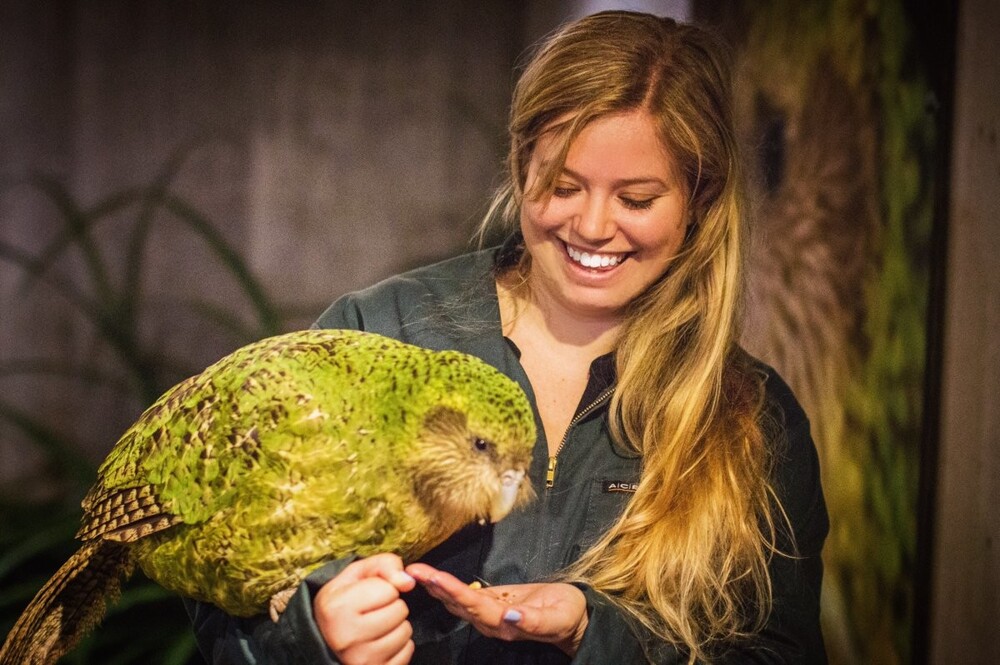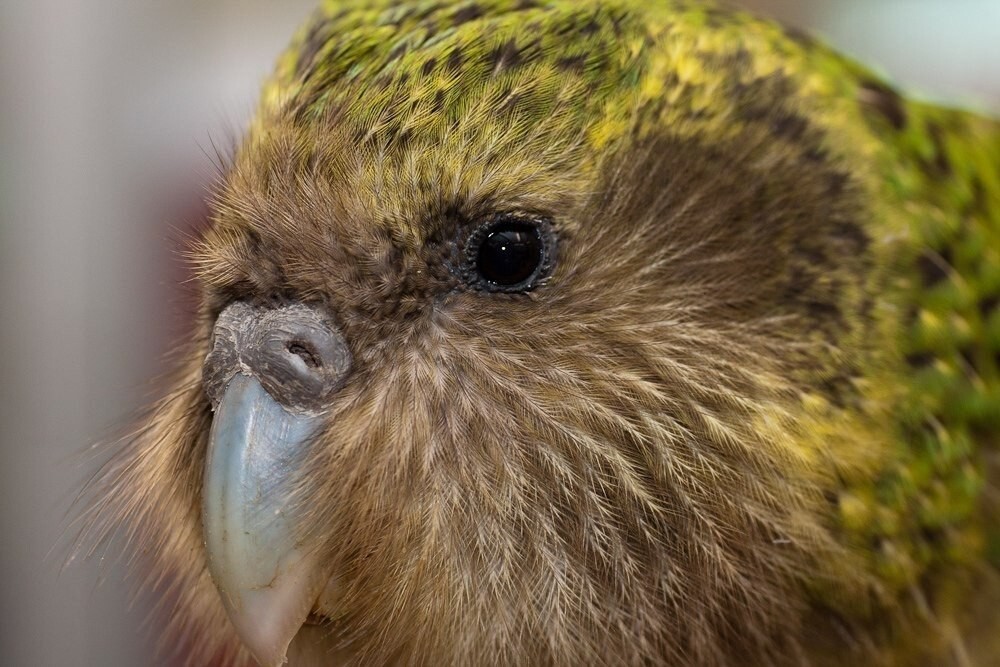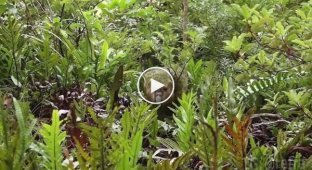A cute, ridiculous bird that is facing extinction due to its physiology (14 photos + 1 video)
Looking at this creature, it is difficult to immediately understand that it is a bird. And it’s also real, not a toy or cartoon. 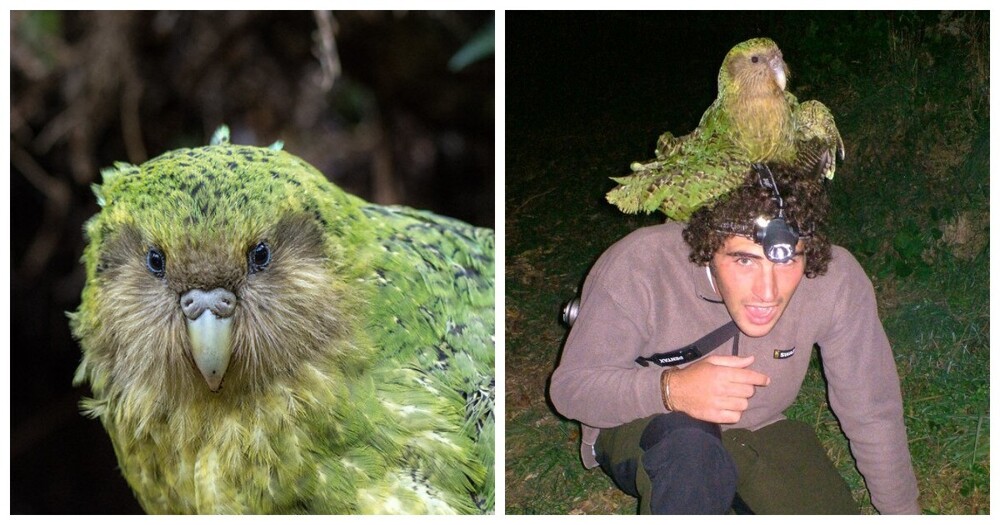
The kakapo (Strigops habroptila) or owl parrot is the only parrot in the world that cannot fly. The habitat of this slightly ridiculous, but very charming handsome fellow is the two largest islands of New Zealand. 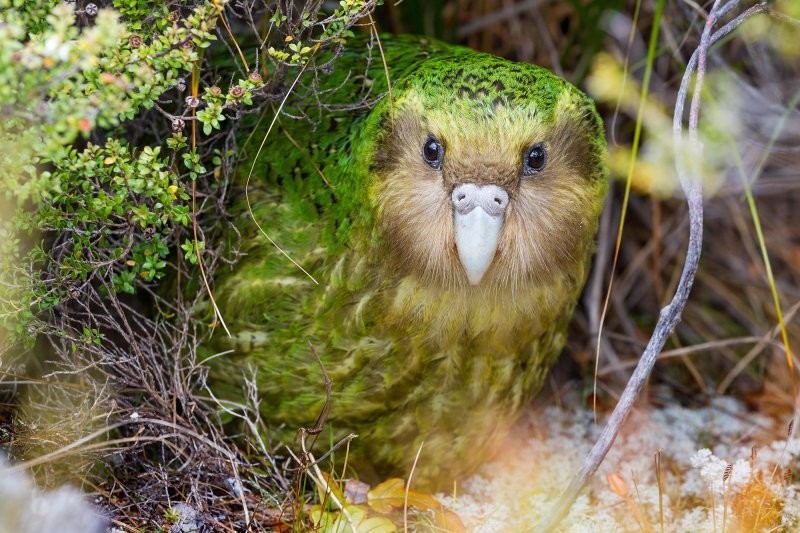
The bird is voluminous and large: the male can grow up to 4 kg with a body length of about 60 cm. The females are smaller. Sensitive feather-hairs give the specific owl expression to the face (hence the name). 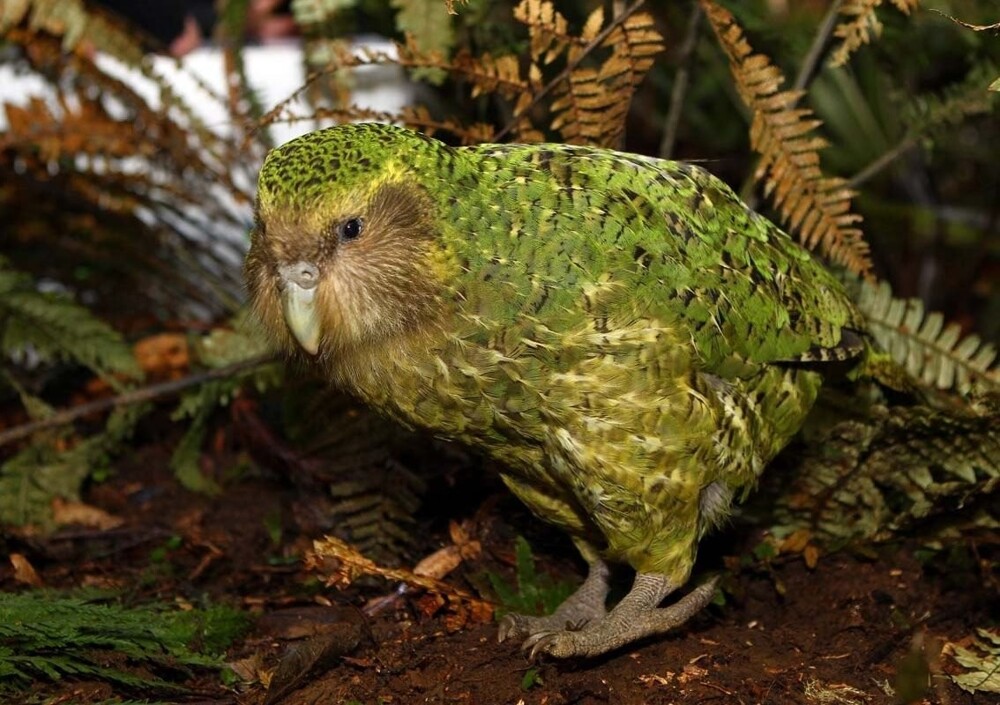
Kakapo cannot fly, as already noted. The maximum you can do is climb a tree and carefully glide down from there. But these plump creatures, whose plumage color palette combines different shades of green, gray and brown, live for a very long time. Not every person can boast of the ability to live to 90 years or even more. But the average lifespan of about 60 years is also quite good for a bird. 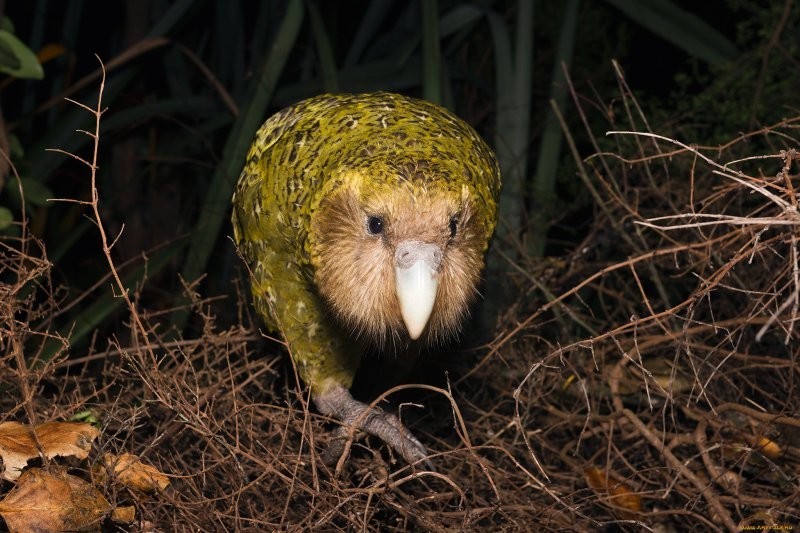
Owl parrots lost the ability to fly during the process of evolution. Their keel is underdeveloped, their wings are weak and small in size. Before people came to the islands, birds had no natural land enemies. Therefore, they occupied the empty niche of small herbivorous mammals. And parrots have learned to escape from birds of prey by being nocturnal. Sensitive vibrissae help to navigate in the dark. 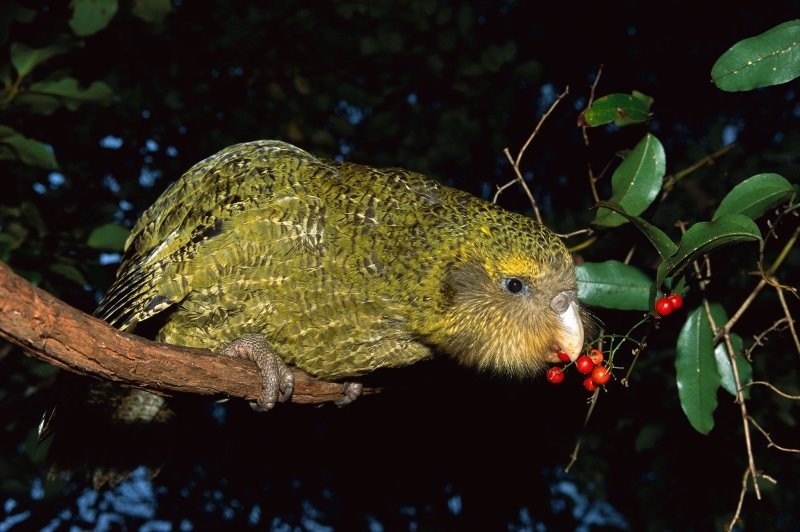
Kakapo cannot fly, but it flies away amazingly quickly on its short legs, covering several kilometers a day. A unique feature of the bird is its unusual smell, reminiscent of a mixture of the aroma of honey, fruits and exotic flowers. 
For the sake of love, these birds overcome a lot of trials. During the mating season, the male makes several cup-shaped nests and cooes in them at night, attracting a mate. Screams can be heard at a distance of up to 5 kilometers. While waiting for love, he can lose up to half his body weight. 
The female, having heard the calling call, advances to a potential partner. And if the groom’s appearance suits her, then mating occurs. After which the male continues to call other ladies, and the female retires to her territory, where she incubates the eggs for a month, and then feeds the chicks for several more months, preparing the offspring for release into the big world. Preserving the population, destroyed by poaching and shrinking habitat, is further complicated by the fact that the birds do not breed annually, but once every 2-4 years. 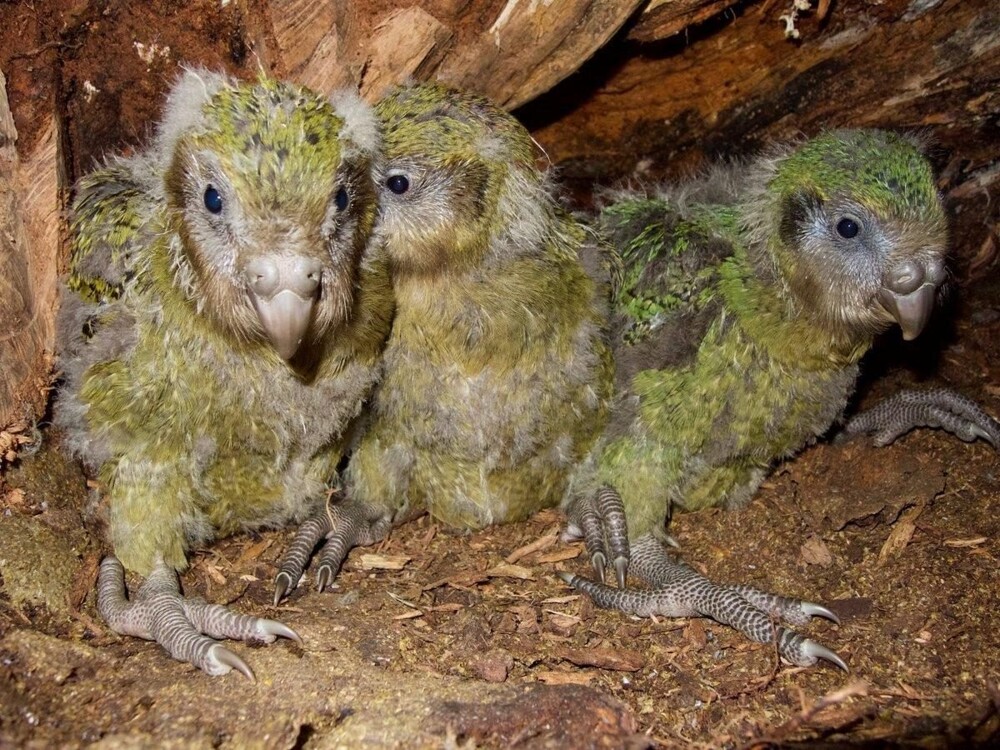
Due to the appearance of people on the islands, who brought dogs and cats with them, kakapo almost disappeared from the face of the earth. After all, the bird is still able to escape from a predator, but it cannot take the eggs with it. Volunteers and conservationists realized it when the number of males dropped to two dozen. But on another island the last population was found. And the birds began to be bred in nature reserves, laying eggs on ordinary hens. 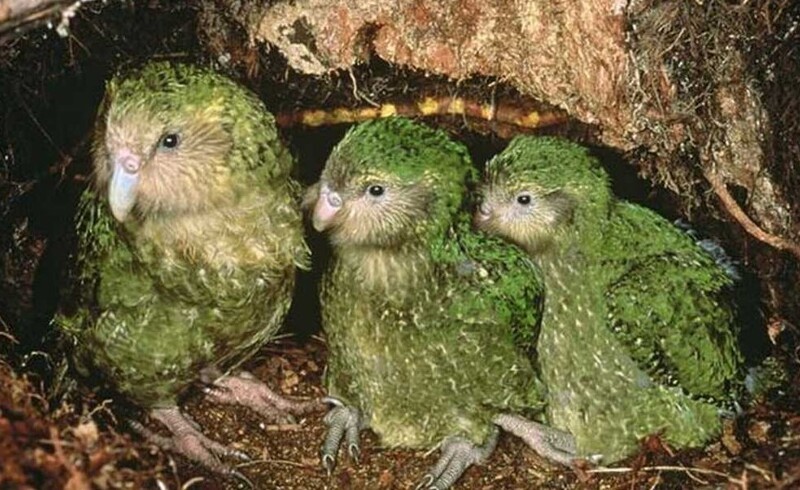
It must be said that kakapos get used to people very quickly and behave like playful puppies, constantly caressing and begging for treats. 
Now the number of good-natured birds exceeds 250 specimens. The species is listed in the Red Book, but the ban on hunting, export and attention to kakapo allow us to hope that the parrot will escape the sad fate of species that have disappeared forever from the face of the earth. 